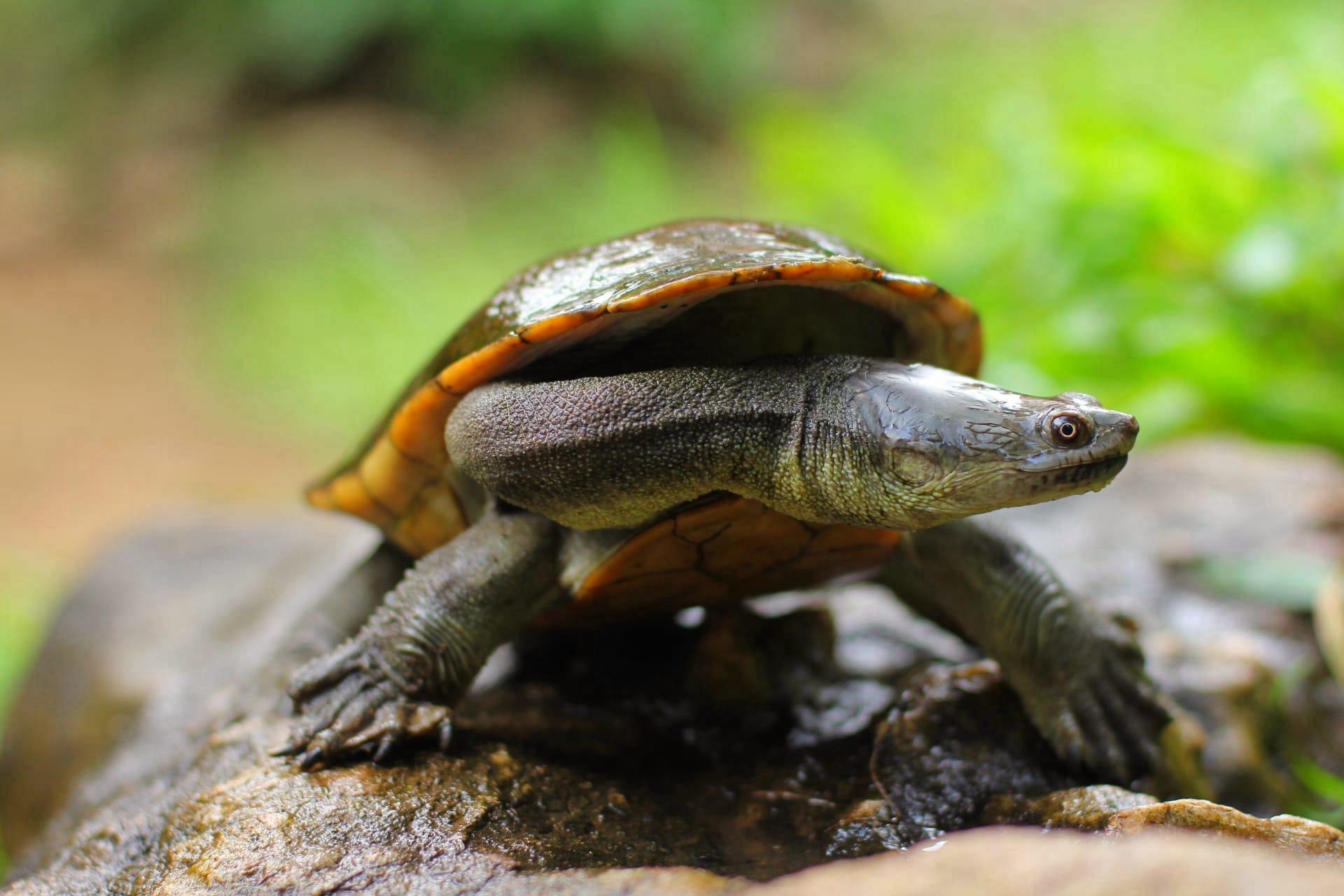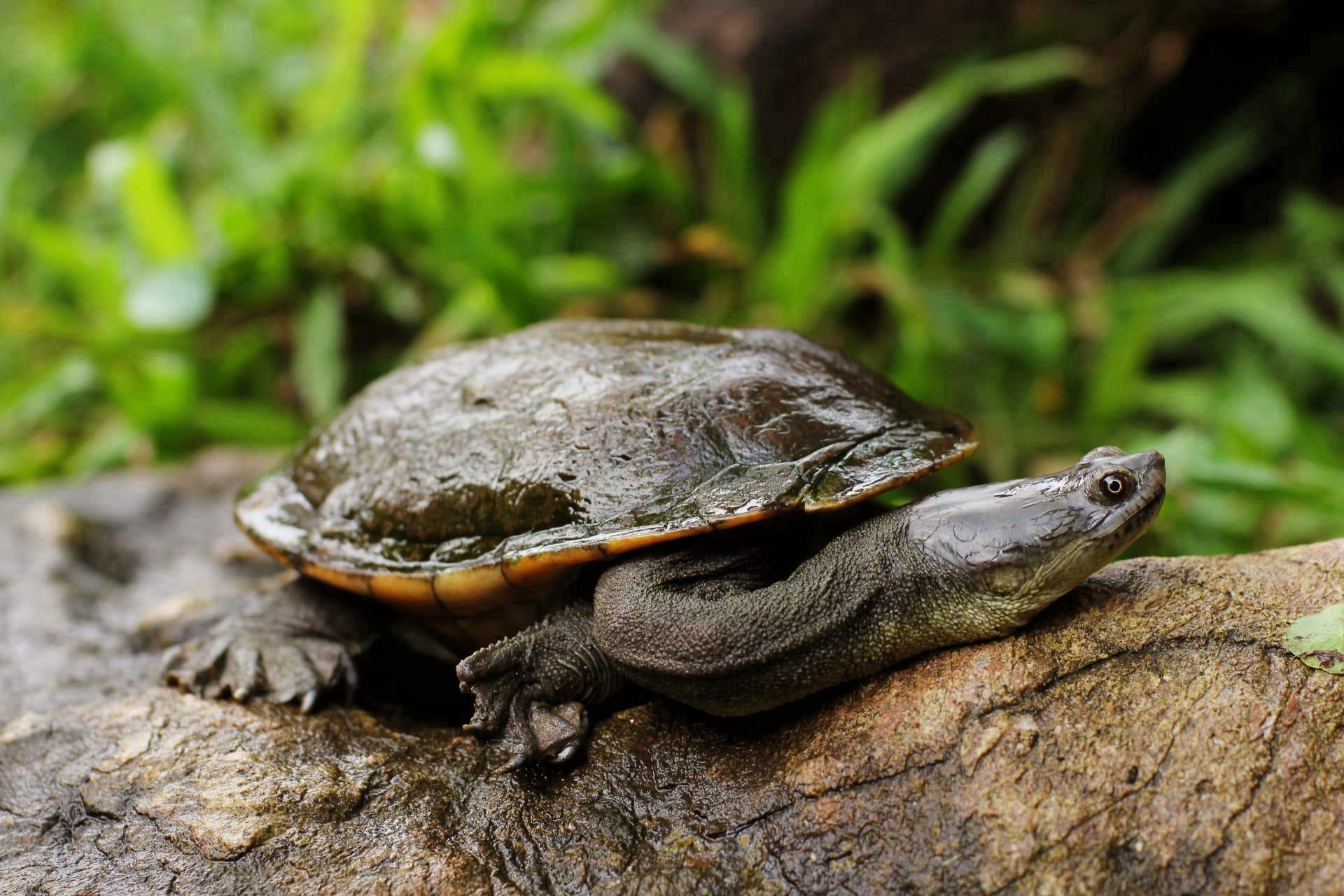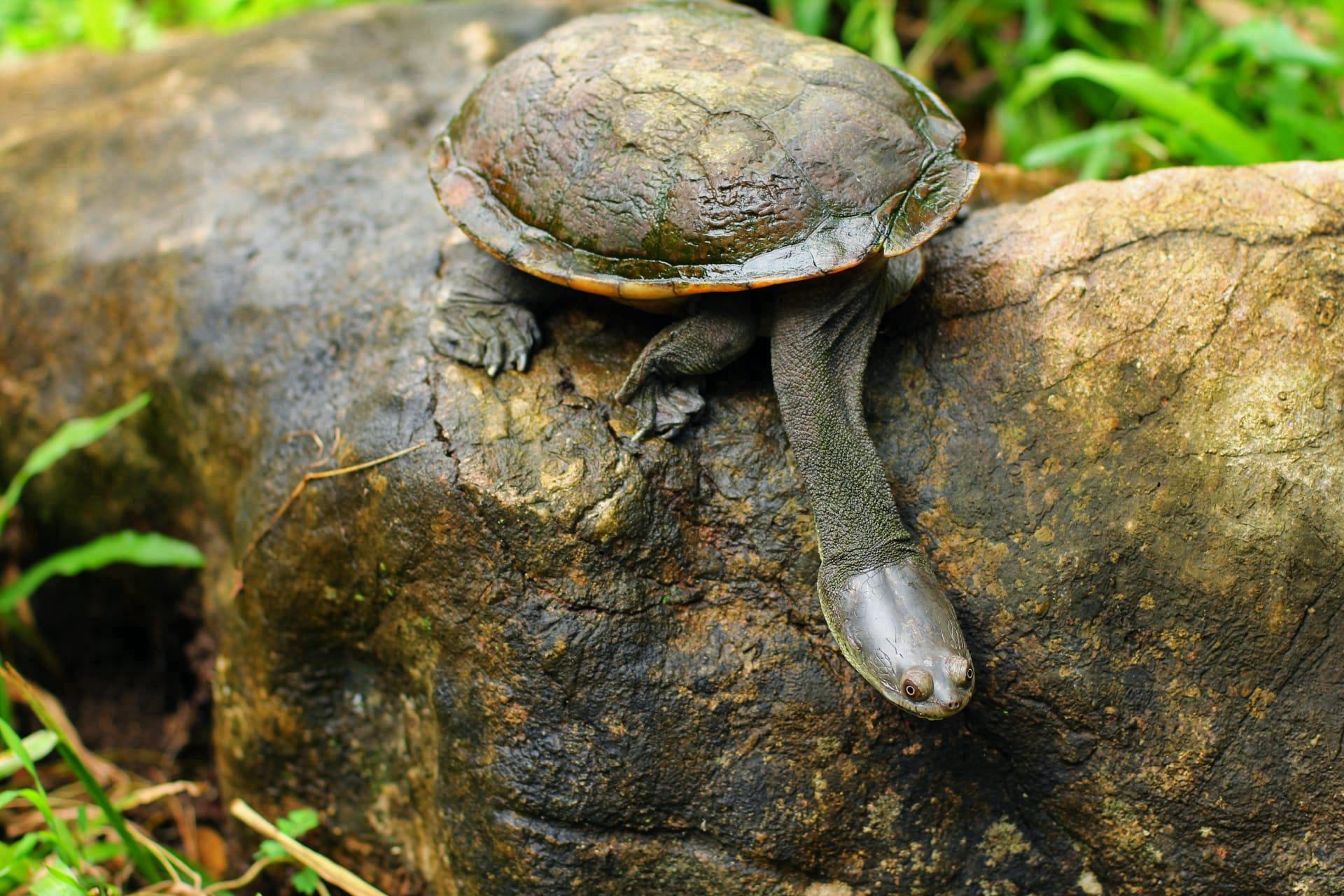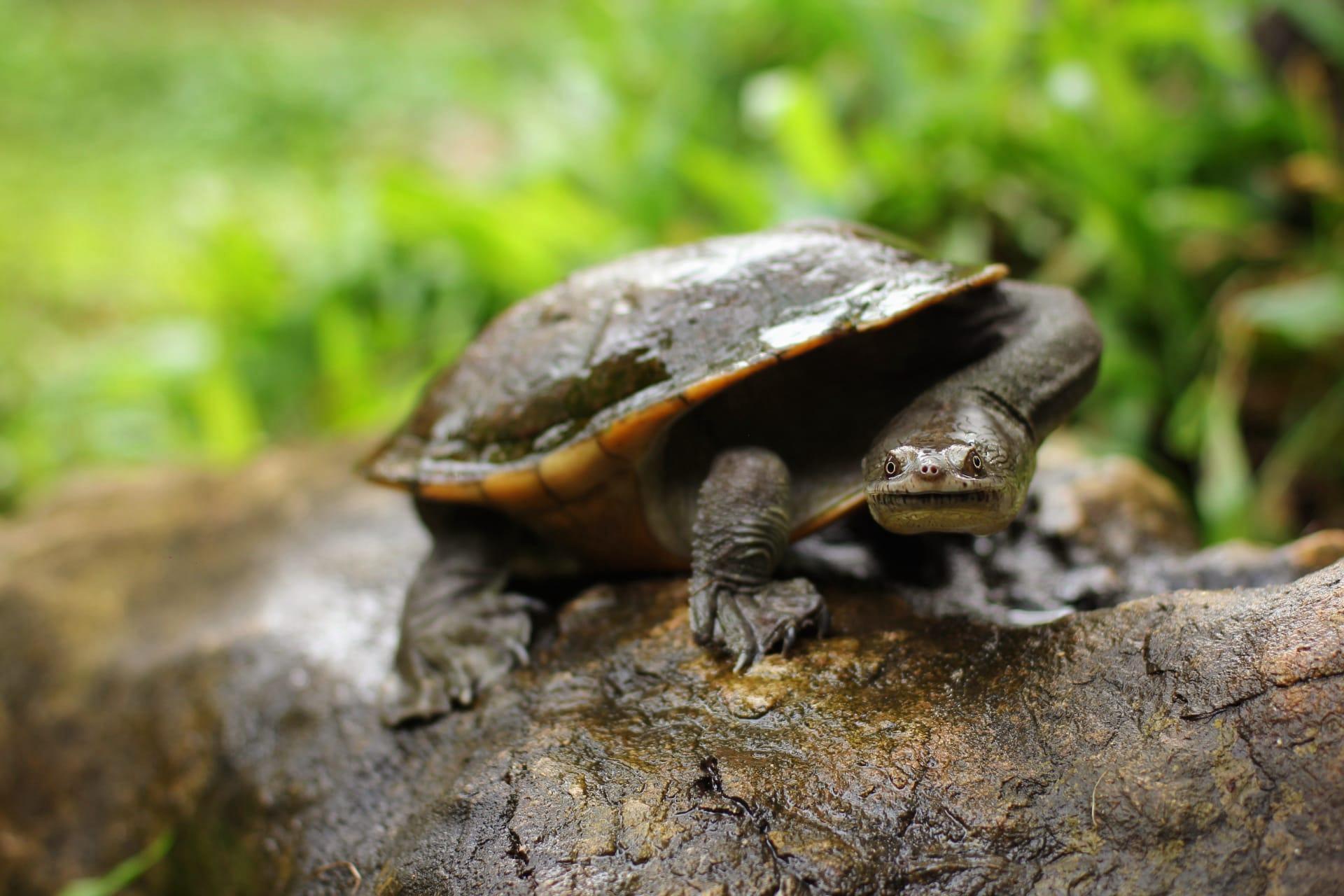Snake Necked Turtle Trivia
- Home /
- Trivia Question /
- Animal /
- Snake Necked Turtle Trivia
1
Question: How long can snake-necked turtles grow, and what's unique about their necks?
Answer: Snake-necked turtles can reach a length of up to 11.8 inches (30 cm). Their necks, often as long as or longer than their shells, have a distinctive side-swinging motion when catching prey, rather than retracting straight back like other turtles.
Question: What kind of diet do snake-necked turtles follow in their natural habitat?
Answer: In the wild, these turtles are carnivorous, feasting on a variety of aquatic life. Their diet primarily includes small fish, crustaceans, and aquatic insects. The elongated neck helps them rapidly strike at prey with a surprise attack.

2
Question: Is it true that snake-necked turtles can't retract their necks into their shells like other turtles?
Answer: Yes, unlike many other turtle species, snake-necked turtles cannot fully retract their necks into their shells. Instead, they fold their necks sideways under the rim of their shell for protection.
Question: Do snake-necked turtles require a special kind of lighting in captivity?
Answer: Absolutely. In captivity, these turtles require UVB lighting to synthesize Vitamin D3, essential for healthy shell and bone development. Without UVB lighting, they're at risk of metabolic bone disease.

3
Question: How do snake-necked turtles reproduce, and what's unique about their eggs?
Answer: Snake-necked turtles lay eggs on land. The female can lay up to 10 eggs per clutch, with a unique characteristic – the eggs are remarkably hard-shelled, more so than many other turtle species. This hard shell protects the eggs from predators and harsh environmental conditions.
Question: What's the lifespan of a snake-necked turtle, and how does it affect their population in the wild?
Answer: These turtles can live up to 25 years in the wild. However, their long lifespan contributes to a slower reproduction rate, making their populations more vulnerable to threats like habitat loss and predation.

4
Question: Are snake-necked turtles good swimmers, and how do they use their necks in water?
Answer: Yes, snake-necked turtles are skilled swimmers. They use their long necks to swiftly navigate through water, aiding in hunting and quick escape from predators. Their necks act like a natural periscope, allowing them to breathe while remaining mostly submerged.
Question: How do snake-necked turtles regulate their body temperature?
Answer: Being ectothermic (cold-blooded), they rely on the environment to regulate their body temperature. They bask in the sun to warm up and will retreat to cooler water or shade to cool down. This thermoregulation is crucial for their digestion and overall health.

5
Question: Can snake-necked turtles recognize their owners or display affection?
Answer: While not as demonstrative as mammals, snake-necked turtles can recognize their owners, especially those who feed them regularly. However, their display of affection is more subtle and may involve more willingness to be handled or fed.
Question: What's the main threat to wild snake-necked turtle populations?
Answer: The primary threat is habitat destruction, including pollution and alterations to their aquatic environments. Additionally, they are sometimes hunted for their meat or collected for the pet trade, further impacting their numbers in the wild.